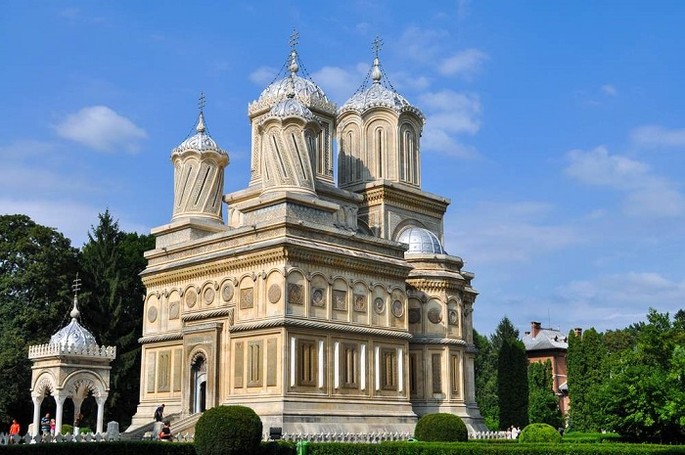Curtea de Arges Monastery (one of the most beautiful Orthodox settlements in the country) was erected upon an old place of worship, dated back to 1359. It was built at the wish of the ruler Neagoe Basarab to build one of the most beautiful monasteries ever seen. Thus, the works began in 1514 and took 3 years, until 1517.
This beautiful edifice is the source of many legends passed on from generation to generation. The most famous one is the Legend of Master Manole, which highlights the motif of the human sacrifice for the realization of grand achievements. As the legend has it, what the builders managed to build during the day crumbled down at night, to their despair. One night, Manole (the worthiest of the three masters chosen by the ruler to build the monastery) had a dream, in which he was told that only by human sacrifice he will be able to complete the works and that he had to incorporate in a wall the first woman to reach the site in the morning.
It so happened that the first woman headed for the monastery was his very wife, Ana, who came to bring him food. He prayed, to no avail, for the wind, the rain and the tempest to make her go back, the implacable destiny sealed her faith. Manole walled up his wife in one of the monastery walls on the southern side (the place is marked on the wall). After such sacrifice, finally, the building stopped crumbling down and was completed.
Yet, destiny reserved to Manole a sacrificial death as well. As the legend would have it, Neagoe Basarab, impressed by the beauty of the edifice and not wanting the master builders to ever build such a monastery had the ladders to the roof removed, so that the builders would no longer be able to come down. Manole made himself wings from shingles, hoping he will be able to come down flying. He crashed and clear water spring formed out of his tears appeared in that same place.
There still is a fountain near the monastery, called Manole's Fountain, built on the place where the spring appeared. Curtea de Arges Monastery impresses by its particular architecture, by the perfection of its proportions, by its richness and the beauty of its decorations, and its legendary aura enhances the historical, cultural and spiritual value of the place of worship.
Sources:
https://www.crestinortodox.ro/biserici-manastiri/manastirea-curtea-arges-67950.html
http://www.romanianmonasteries.org/ro/alte-manastiri/curtea-de-arges



























